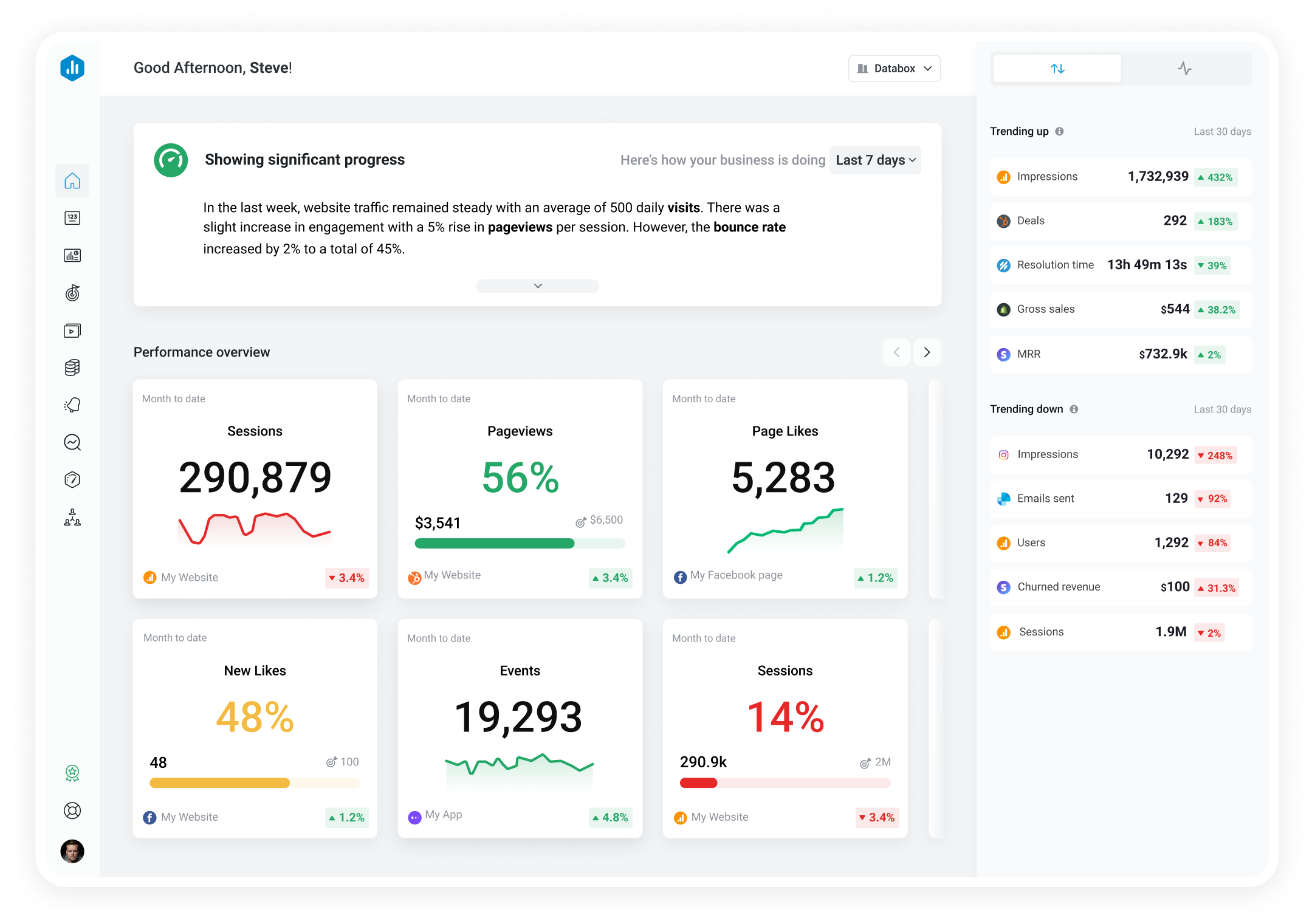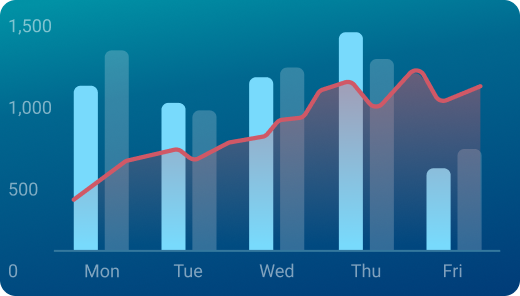Track all of your key business metrics from one screen
GET STARTED
 QuickBooks
Total Expenses (Accrual) by Subcategory
QuickBooks
Total Expenses (Accrual) by Subcategory Total Expenses (Accrual) by Subcategory is a metric that shows the aggregate amount of expenses incurred by each subcategory in a business. It helps track and analyze spending patterns within specific expense categories for better financial management.
With Databox you can track all your metrics from various data sources in one place.

Used to show comparisons between values.
Databox is a business analytics software that allows you to track and visualize your most important metrics from any data source in one centralized platform.
To track Total Expenses (Accrual) by Subcategory using Databox, follow these steps:
 Goals
Goals Scorecards
Scorecards Metric Digest
Metric Digest Metric Builder
Metric Builder Data Calculations
Data Calculations Performance Screen
Performance Screen